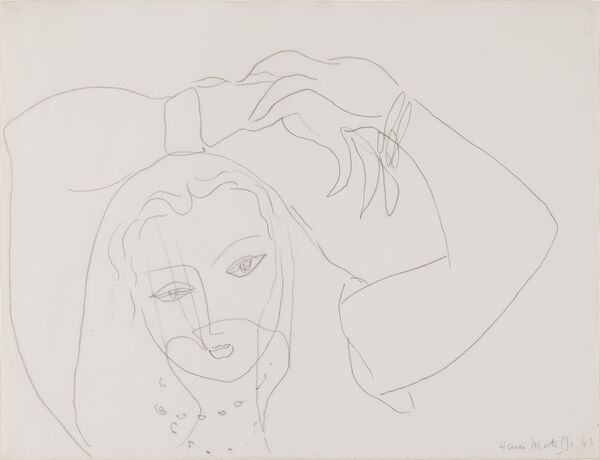Henri Matisse
(French, 1869-1954)
Henri-Émile-Benoît Matisse was born in 1869 in France in Le Cateau-Cambrésis, Nord-Pas-de-Calais. He went to Paris in 1887 to study and after qualifying, he worked as a court administrator in Le Cateau-Cambrésis. Matisse first started painting during a period of convalescence and went on to study art in 1891 at the Académie Julian as a student of William-Adolphe Bouguereau and Gustave Moreau. He was influenced by the works of the post-Impressionists Paul Cézanne, Gauguin, Van Gogh and Paul Signac as well as Japonisme.
Matisse's first exhibition was held in 1901 and his first solo exhibition in 1904. His fondness for bright and expressive colour became more pronounced after he moved southwards in 1905 to work with André Derain and had spent time on the French Riviera. During this time his paintings were characterized by flat shapes and controlled lines, with expression dominant over detail. He became known as a leader of the Fauves (wild beasts), a group of artists which also included Derain, Georges Braque, Raoul Dufy and Maurice de Vlaminck.
Matisse was both a friend and a rival with his younger contemporary Picasso, to whom he was often compared. A key difference between them is that Matisse drew and painted from nature, while Picasso was much more inclined to work from imagination. The subjects painted most frequently by both artists were women and still lifes.
Matisse lived in Cimiez on the French Riviera, now a suburb of the city of Nice, from 1917 until his death in 1954. His work following this relocation shows a relaxation and a softening of his approach. Following surgery, Matisse started using a wheelchair. Not allowing this setback to halt his work he set about creating cut paper collages, often on a large scale, called gouaches découpés. His Blue Nudes series feature prime examples of this technique; these demonstrate the ability to bring his eye for colour and geometry to a new medium of utter simplicity, but with playful and delightful power.
Matisse lived through some of the most traumatic political events in recorded history, yet he never made a didactic painting or signed a manifesto. Believing in the utter self-sufficiency of painting, Matisse was able to ignore the politics of war and instead focussed his energy on making art for art's sake.

